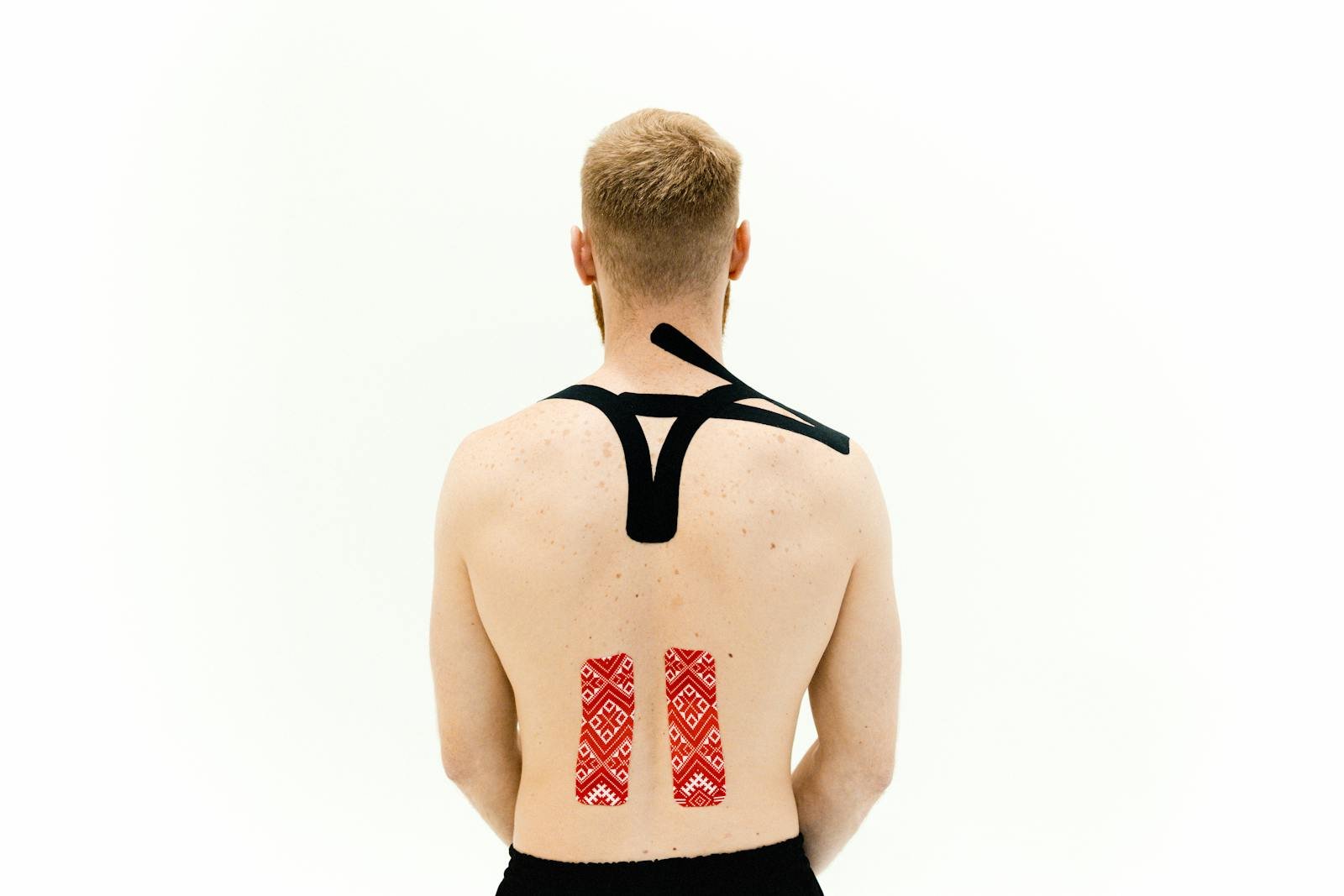Intense upper back pain can be a distressing experience that affects your daily activities. Whether it comes on suddenly or builds up over time, knowing the causes and potential treatments is crucial for effective management. In this article, we will explore the various causes of intense upper back pain, its relationship with pregnancy, and tips for alleviating the discomfort.
What is Intense Upper Back Pain?
Intense upper back pain refers to severe discomfort located in the upper region of the back, typically between the shoulders and the neck. This type of pain can range from a sharp, stabbing sensation to a dull ache that persists throughout the day. It may be caused by several factors, including muscle strain, injury, or underlying medical conditions.
Common Symptoms of Intense Upper Back Pain
Symptoms associated with intense upper back pain can vary depending on the underlying cause. Common symptoms may include:
- Sharp or stabbing pain
- Dull aching sensation
- Muscle tightness or stiffness
- Pain that radiates to the neck or shoulders
- Difficulty in moving or turning the upper body
If you experience intense upper back pain alongside other symptoms, such as shortness of breath or numbness, it’s essential to seek medical attention immediately, as these may indicate a more serious condition.
Causes of Intense Upper Back Pain
Understanding the root causes of intense upper back pain is crucial for effective treatment. Here are some common causes:
1. Muscle Strain
One of the most common causes of intense upper back pain is muscle strain. This can occur from:
- Poor posture while sitting or standing
- Overexertion during physical activities
- Lifting heavy objects incorrectly
When muscles in the upper back become strained, they can lead to significant discomfort.
2. Injury
Injuries to the upper back, whether from sports or accidents, can result in intense pain. Whiplash from car accidents is a common cause of upper back pain.
3. Herniated Discs
A herniated disc occurs when the soft material inside a spinal disc protrudes, pressing against nearby nerves. This condition can cause sharp, intense pain in the upper back.
4. Arthritis
Arthritis in the spine can lead to inflammation and pain. Conditions like osteoarthritis or rheumatoid arthritis can affect the upper back and result in significant discomfort.
5. Fibromyalgia
Fibromyalgia is a chronic condition characterized by widespread pain, including in the upper back. People with fibromyalgia often report intense pain that can be debilitating.
Intense Upper Back Pain During Pregnancy
Pregnancy can significantly affect a woman’s body, and many experience intense upper back pain. The weight of the growing baby, changes in posture, and hormonal fluctuations can lead to discomfort. Here are some common reasons for intense upper back pain during pregnancy:
- Postural Changes: As the belly grows, a woman’s center of gravity shifts, leading to poor posture and strain on the upper back.
- Hormonal Changes: Hormones released during pregnancy can loosen ligaments, making the spine more vulnerable to strain.
- Weight Gain: The additional weight can put extra stress on the back muscles, causing pain.
To manage upper back pain during pregnancy, women should consider gentle exercises, prenatal yoga, and proper ergonomic support while sitting or sleeping.
Previous Post: Right Side Mid Back Pain: Understanding Causes, Symptoms, and Treatment Options
Sudden Intense Upper Back Pain: When to Seek Help
Experiencing sudden intense upper back pain can be alarming. Here are some signs that indicate the need for immediate medical attention:
- Severe pain that does not improve with rest
- Pain accompanied by numbness or tingling in the arms or legs
- Difficulty breathing or chest pain
- Fever or unexplained weight loss
These symptoms may indicate a more serious condition requiring urgent evaluation by a healthcare professional.
Treatment Options for Intense Upper Back Pain
1. Over-the-Counter Medications
Nonsteroidal anti-inflammatory drugs (NSAIDs), such as ibuprofen or naproxen, can help alleviate pain and reduce inflammation. Acetaminophen (Tylenol) is also effective for pain relief.
2. Physical Therapy
A physical therapist can design a personalized program to strengthen the muscles supporting the back, improve posture, and enhance flexibility. This approach can be particularly beneficial for those with chronic pain.
3. Hot and Cold Therapy
Applying heat or cold packs to the affected area can help alleviate pain. Heat can relax tense muscles, while cold can reduce inflammation.
4. Alternative Therapies
- Chiropractic Care: Chiropractors can perform spinal manipulations to relieve pressure on the spine and improve alignment.
- Acupuncture: This traditional Chinese medicine technique involves inserting thin needles into specific points on the body to relieve pain.
5. Lifestyle Modifications
Making changes to daily activities can help prevent and relieve intense upper back pain:
- Ergonomics: Ensure proper ergonomics when sitting or working at a desk.
- Regular Exercise: Incorporate exercises that strengthen the back muscles and improve flexibility.
- Posture Awareness: Be mindful of posture when sitting, standing, or lifting heavy objects.
Table: Common Causes of Intense Upper Back Pain
| Cause | Description | Treatment |
|---|---|---|
| Muscle Strain | Strain from poor posture or overexertion | Rest, heat therapy, NSAIDs |
| Injury | Pain from accidents or sports | Physical therapy, rest |
| Herniated Discs | Protruding disc pressing on nerves | Physical therapy, surgery if severe |
| Arthritis | Inflammation in the spine | NSAIDs, physical therapy |
| Fibromyalgia | Chronic pain condition | Medications, lifestyle changes |
Expert Advice and Conclusion
As a healthcare professional, I have seen many patients struggle with intense upper back pain. It’s essential to listen to your body and seek help when needed. Understanding the causes and treatments available can empower you to manage and alleviate your pain effectively.
For more information on back pain and treatment options, consider visiting reputable sources such as the Mayo Clinic or Cleveland Clinic.
Whether you experience sudden intense upper back pain or ongoing discomfort, identifying the root cause is vital for effective treatment. Always consult a healthcare professional for a tailored approach to managing your pain and improving your quality of life.
Understanding Intense Upper Back Pain
Intense upper back pain can be a debilitating condition that not only affects your physical health but can also impact your mental well-being. It can arise from various causes, and understanding these causes is crucial for effective management. In this continuation, we will dive deeper into the symptoms, diagnosis, and advanced treatment options for intense upper back pain.
Symptoms of Intense Upper Back Pain
The symptoms of intense upper back pain can manifest in different ways, affecting your daily activities and quality of life. Here are some specific symptoms to watch for:
1. Pain with Movement
Many patients report that intense upper back pain worsens with movement, particularly activities involving twisting or lifting. This can limit daily functions, such as bending down to pick something up or even turning your head.
2. Pain at Rest
Unlike some types of pain that improve with rest, intense upper back pain may persist even when you’re not active. This can indicate underlying conditions that need to be addressed.
3. Radiating Pain
Some individuals experience pain that radiates from the upper back to the shoulders, neck, or even down the arms. This may signal nerve involvement and requires further evaluation.
4. Muscle Spasms
Muscle spasms in the upper back can accompany intense pain. These involuntary contractions can be incredibly painful and further restrict movement.
5. Changes in Sensation
Numbness or tingling sensations in the arms or hands may occur alongside upper back pain. These symptoms often indicate nerve compression or irritation.
What Does Intense Upper Back Pain Feel Like?
Describing the sensation of intense upper back pain can be subjective, but many patients describe it in the following ways:
- Sharp or stabbing: A sudden, intense pain that feels like a jolt.
- Dull ache: A persistent discomfort that lingers and can vary in intensity.
- Tightness or pressure: A sensation similar to a heavy weight pressing on the back.
- Burning: A feeling of heat or burning that can accompany the pain.
If you’re experiencing pain in your upper back that feels unusual or is accompanied by other symptoms, it’s essential to consult a healthcare professional.
Diagnosing Intense Upper Back Pain
Diagnosing the cause of intense upper back pain typically involves a combination of patient history, physical examination, and diagnostic tests. Here’s what you can expect during the diagnostic process:
1. Medical History
Your doctor will start by taking a detailed medical history, including:
- Duration and intensity of the pain
- Any recent injuries or strains
- Previous medical conditions or surgeries
- Lifestyle factors, such as occupation and exercise habits
2. Physical Examination
A thorough physical examination may include assessing your posture, range of motion, and any areas of tenderness or swelling. Your doctor may also perform neurological tests to evaluate reflexes and sensory function.
3. Diagnostic Imaging
If the cause of your upper back pain isn’t clear from the history and examination, your doctor may order imaging studies such as:
- X-rays: Useful for identifying fractures or structural abnormalities.
- MRI: Provides detailed images of soft tissues, including muscles, discs, and nerves, helping to identify herniated discs or spinal stenosis.
- CT scans: Offers cross-sectional images that can reveal bone and soft tissue problems.
Advanced Treatment Options for Intense Upper Back Pain
If conservative treatments do not provide relief, several advanced options are available. These may include:
1. Injections
For targeted pain relief, your doctor may recommend injections such as:
- Corticosteroid injections: These can reduce inflammation around nerves and joints in the spine.
- Nerve blocks: An injection that can interrupt pain signals from specific nerves.
2. Chiropractic Treatment
Chiropractic adjustments may help relieve upper back pain by improving spinal alignment. Chiropractors use hands-on techniques to manipulate the spine and restore proper function.
3. Massage Therapy
Massage therapy can help relax tense muscles, improve circulation, and relieve pain. Therapeutic massage can be an effective complementary treatment for upper back pain.
4. Acupuncture
This traditional Chinese medicine technique involves inserting thin needles into specific points on the body to alleviate pain. Some patients report significant relief from acupuncture treatments.
5. Surgery
In rare cases, surgery may be necessary, especially if there is severe nerve compression or structural issues in the spine. Common surgical procedures include:
- Laminectomy: Removal of part of the vertebra to relieve pressure on nerves.
- Discectomy: Removal of herniated disc material pressing on nerves.
Preventing Intense Upper Back Pain
While some causes of intense upper back pain may be unavoidable, many can be prevented or minimized with proper care and attention. Here are some practical prevention tips:
1. Maintain Good Posture
Whether you’re sitting, standing, or lifting, maintaining good posture is vital. Keep your back straight, shoulders back, and avoid slouching. Using ergonomic furniture can help support good posture.
2. Stay Active
Regular exercise can strengthen the muscles that support your back and improve flexibility. Focus on exercises that promote core strength and overall body fitness.
3. Use Proper Lifting Techniques
When lifting heavy objects, bend at your knees rather than your back. Keep the object close to your body and avoid twisting while lifting.
4. Stretch Regularly
Incorporate stretching into your daily routine to maintain flexibility and reduce muscle tension. Yoga can be particularly beneficial for overall back health.
5. Manage Stress
Stress can lead to muscle tension and pain. Practice stress-reduction techniques such as meditation, deep breathing exercises, or mindfulness.
When to See a Doctor
While many cases of intense upper back pain can be managed at home, it’s essential to know when to seek medical attention. Consider consulting a healthcare provider if:
- Your pain persists for more than a few days without improvement.
- You experience significant pain following an injury or trauma.
- You have accompanying symptoms, such as fever, unexplained weight loss, or weakness.
- Pain radiates down your arms or legs.
Resources for Further Information
For more information on upper back pain and its treatment, consider visiting the following reputable sources:
- American Academy of Orthopaedic Surgeons (AAOS)
- National Institutes of Health (NIH)
- Cleveland Clinic
- Mayo Clinic
Conclusion
Intense upper back pain can disrupt your life and limit your ability to perform daily activities. By understanding the causes and available treatment options, you can take proactive steps toward managing and alleviating your pain. Remember to prioritize good posture, stay active, and seek professional help when needed. As a healthcare professional, I emphasize the importance of addressing any concerning symptoms early to prevent further complications.
In summary, while intense upper back pain can be challenging, a combination of lifestyle changes, medical treatments, and preventive measures can lead to significant improvements in your quality of life. If you have any questions or concerns about your back pain, don’t hesitate to reach out to a healthcare professional for personalized advice and care.




